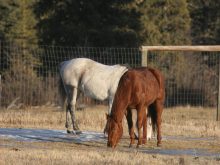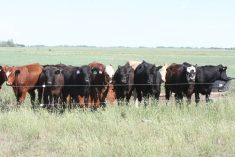Cattle will soon be returning from summer pastures and I believe there is huge potential for community pastures to advance cattle production by being proactive.
Community pastures vary greatly in overall management and direction and most have capable pasture managers and riders to get the job done.
However, it is sometimes difficult to implement changes on a group level. Progressive managers can be out-voted by naysayers and over the years, many rules have made certain things mandatory. Yet this group of cattle in general is the most insecure in terms of biosecurity so various practices should be undertaken.
Read Also

U.S. farm group supports supply management
U.S. grassroots farm advocacy group pushing new agriculture legislation that would move towards supply management like Canada has for dairy industry
Most community pastures have cattle derived from a large geographic area so vaccination protocols make a lot of sense. Only home-raised cattle should be allowed, and not those derived from auction markets, so tracebacks will be easy if they become necessary. If we had a best practices approach in which community pastures could learn from each other, it could prove invaluable.
I have tested many fecal samples for internal parasites at community pastures over the years and found higher levels in most samples. An assurance of deworming is necessary but the best thing would be midsummer worming on pasture for the entire group, either through water or minerals.
Pastures vary but some use solar pumps into portable water troughs to improve gain and these can also be used as treatment mechanisms for internal parasites.
Most pastures also have good handling facilities because of the need to sort multiple patrons’ cattle. These facilities can be used if treatments are needed upon entry, such as applying fly control or preventive treatment of pneumonia with antibiotics or intranasal vaccines. Steer calves can also be implanted if that is the wish of the group or individual owner.
Upon exit, sorting is necessary and I know one community pasture that made a Y in the alley leading to two chutes. Two veterinarians preg check and sort after that. Over the years, this has identified some herds with more breeding problems but also it is a direct test of reproductive rates at the pasture. Lots of females are bred before pasture entry so later checking provides a great window into the patrons’ herd fertility.
Over the years, bull committees have been strict on bull quality and requirements for a recent satisfactory semen test and checks of feet, legs and overall body condition. Many have a maximum and minimum age on bulls that can enter, which is fantastic.
Years ago, trichomoniasis was detected at some Saskatchewan PFRA pastures and checks were needed to weed out affected animals. Some pastures maintain this risk-based testing.
Community pastures make it difficult to find dead cattle in time to do an autopsy. A good inspection upon entry and refusal of problem pairs is thus a wise protocol. In Alberta, inspection used to be paid for by the provincial government but that went away a few decades ago. Most pastures continued to pay for it privately because they saw it as a valuable service to patrons.
A surveillance partnership has been created with the Canadian Food Inspection Agency, which does sample testing of herds in northern Alberta for brucellosis. Multiple herds are tested with a representative sample from each herd.
Community pastures can also undertake studies on particular products such as tag retention, fly control or growth from implants. This is valuable because it covers a cross-section of the cattle industry.
I used to be invited to annual meetings to speak, and at times it was a roast, but found that good discussions can benefit herds. There is huge potential to educate, improve production and implement new things at community pastures because they deal with large numbers of cattle representing most breeds and an array of management practices.
Pasture managers must be efficient because entries and exits are usually in one or two days so lots of work has to be done. The executive must be progressive and look for ways to improve production and animal health. Economics must be examined, and handling must be made as efficient and stress-free as possible.
I think all community pastures have great potential to increase productivity through optimum growth and sickness prevention. Most have already done it on grass production with pasture rotation, spraying of invasive trees, fencing out riparian areas and implementing a great array of other management practices.
Roy Lewis works as a veterinarian in Alberta.















